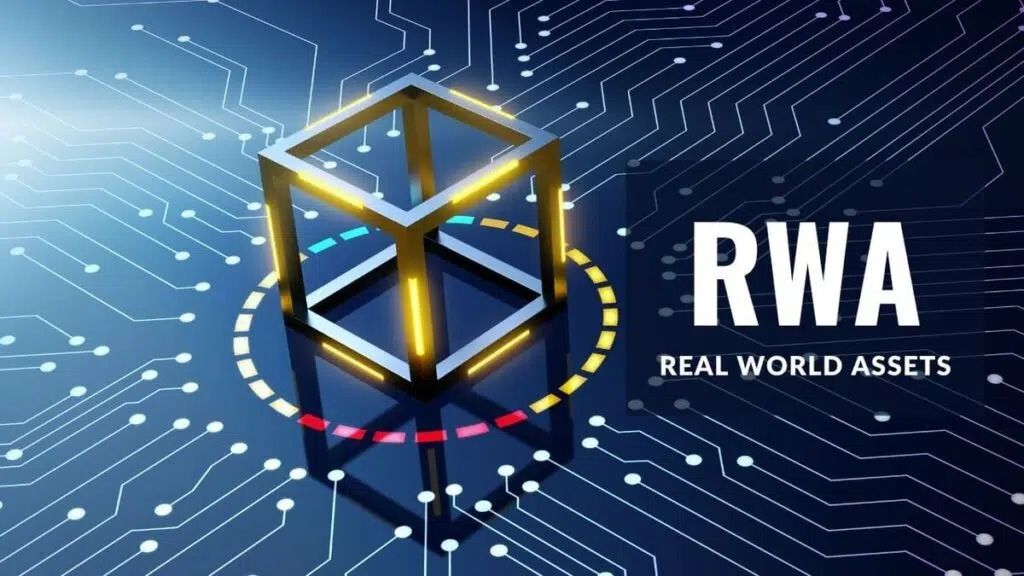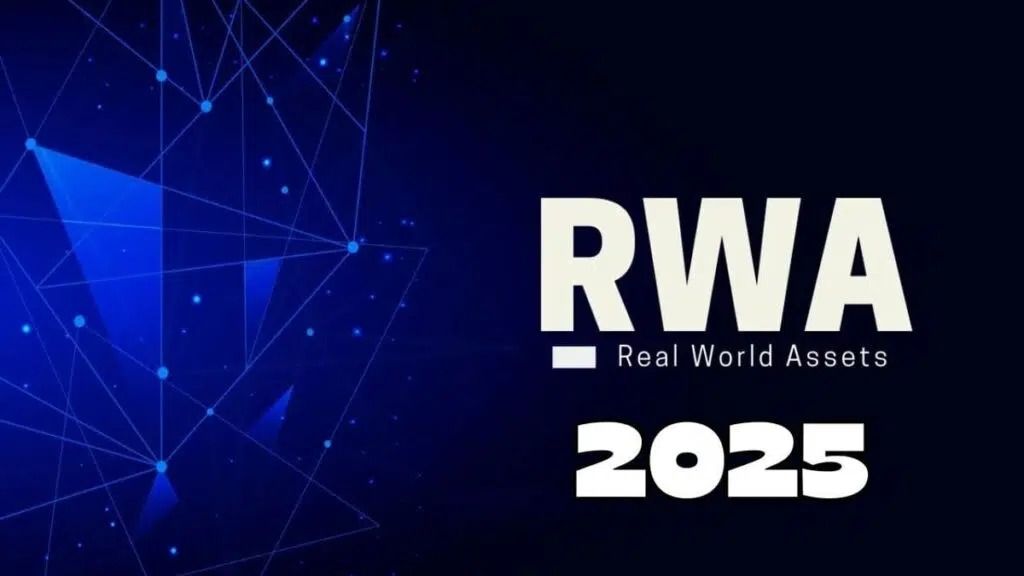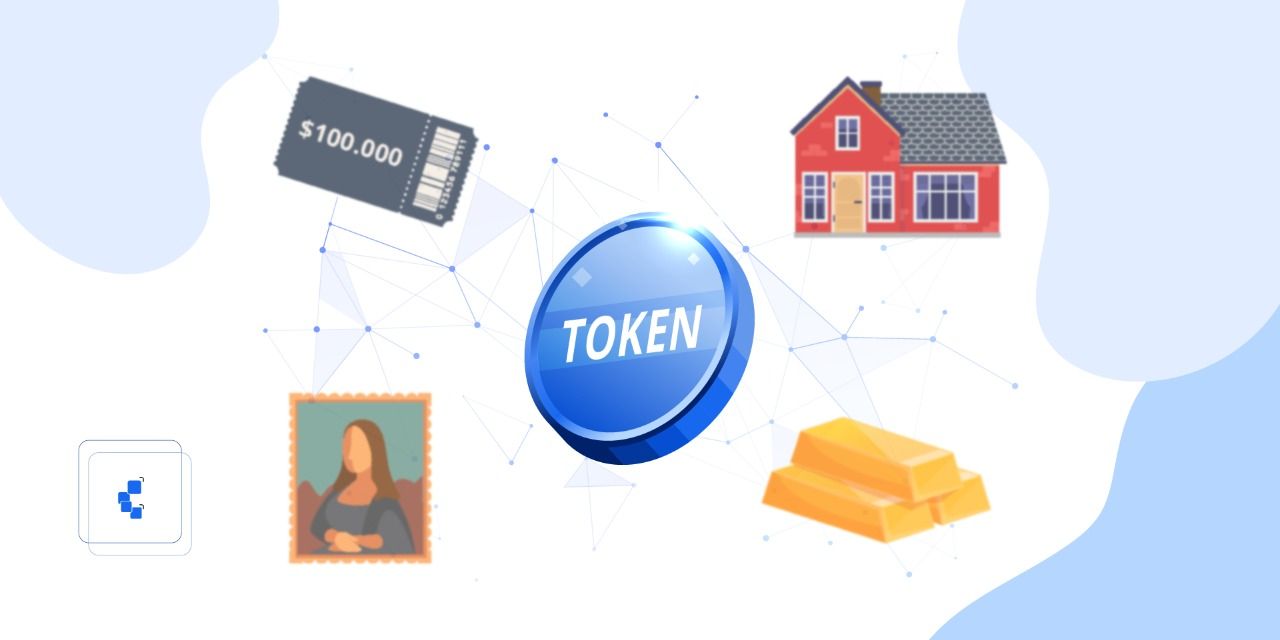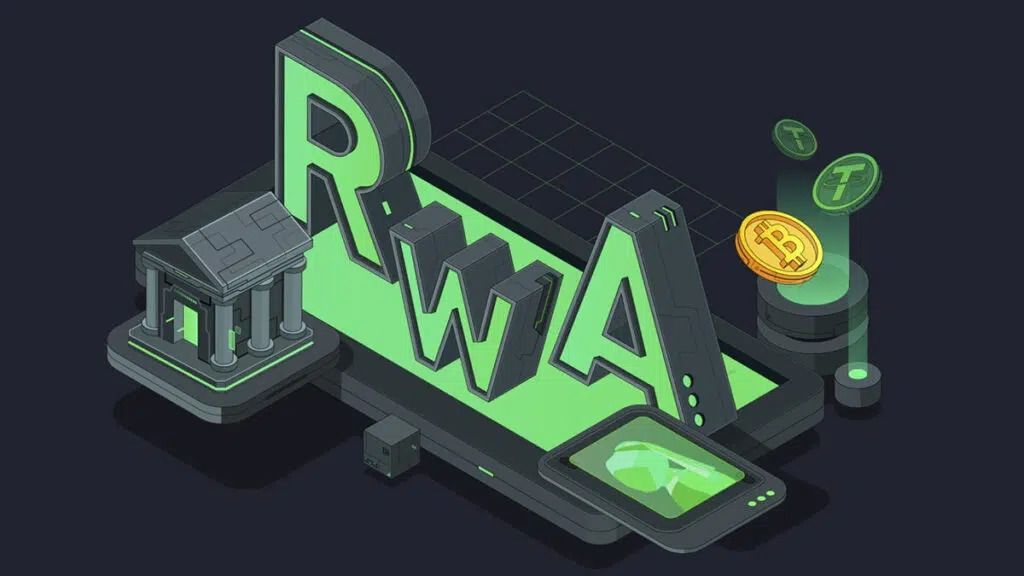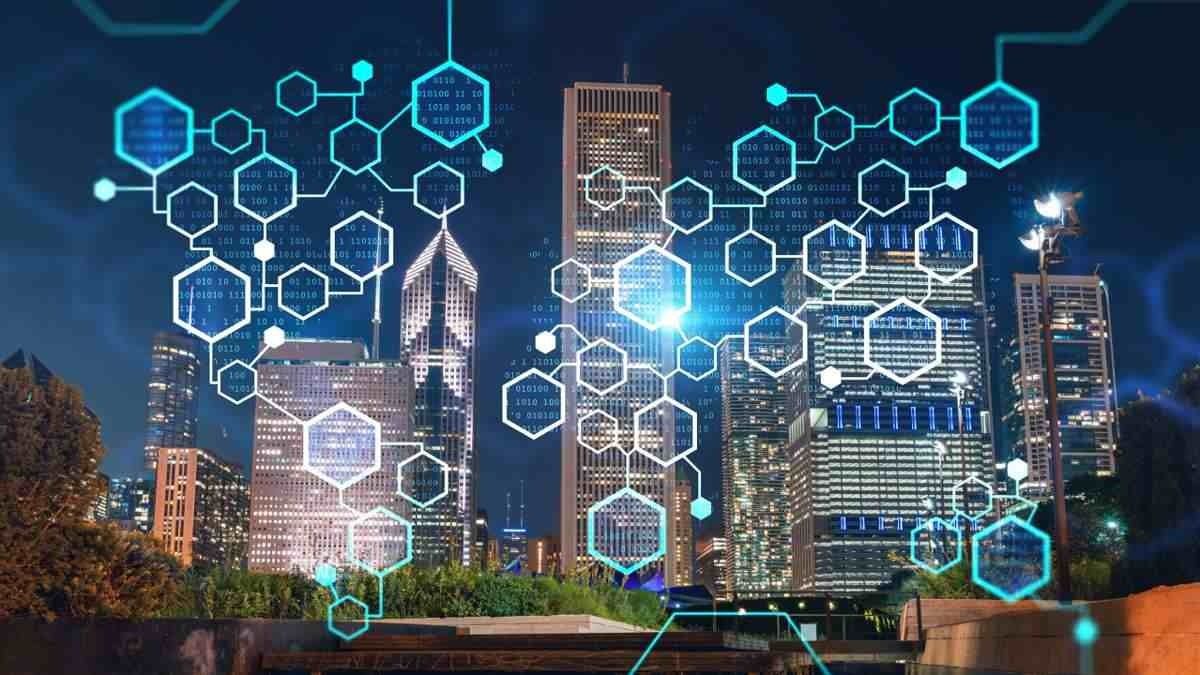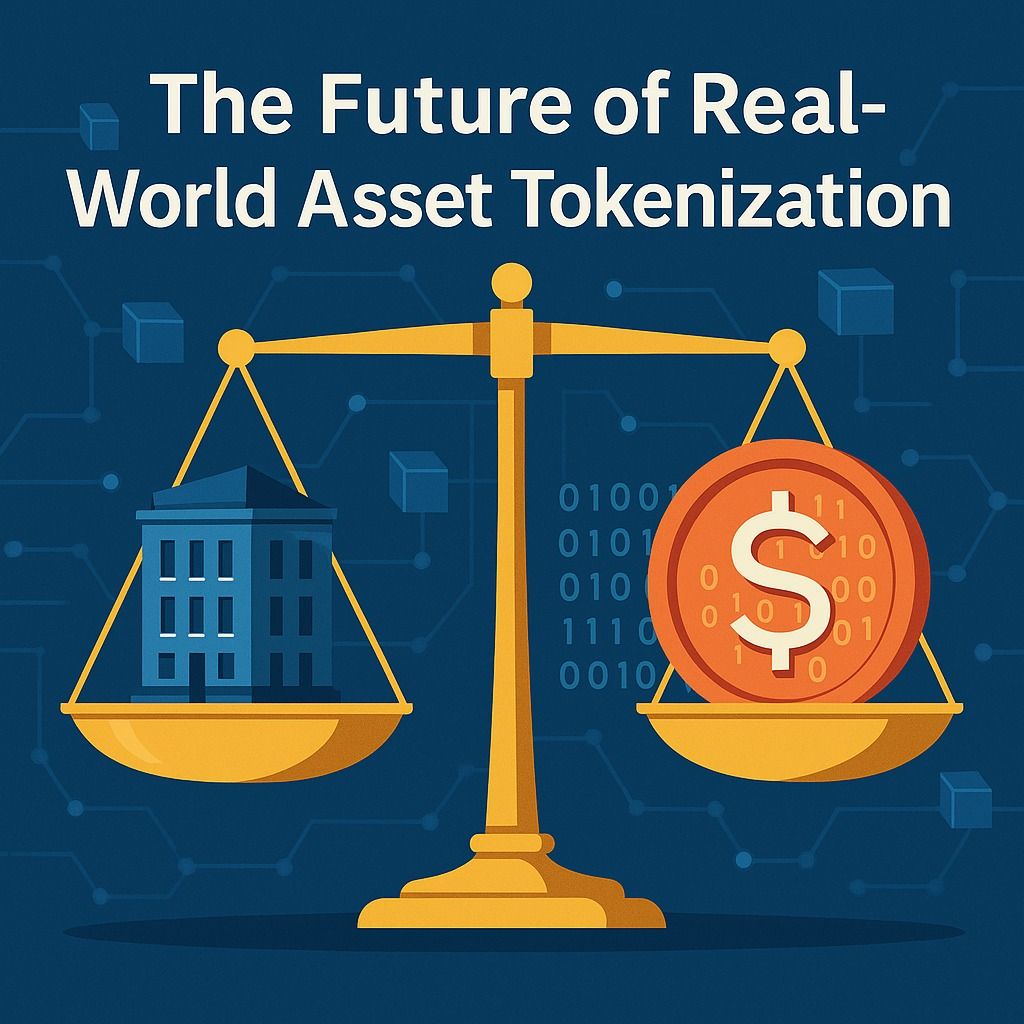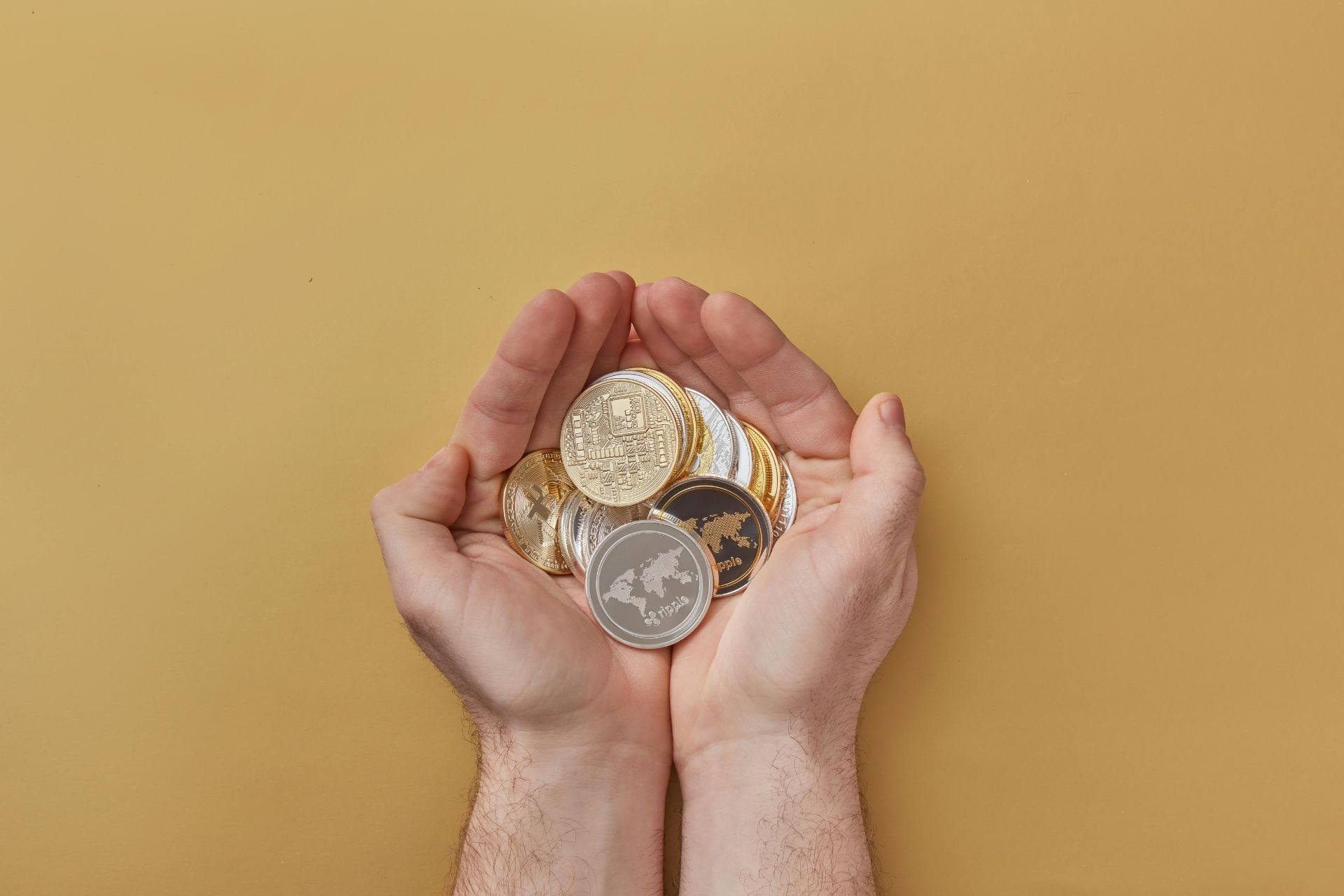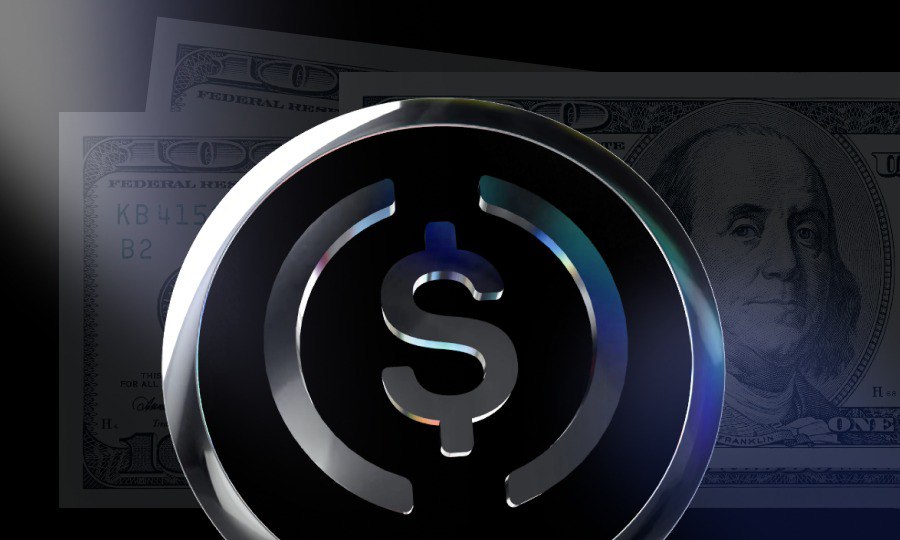
Advances in Real-World Asset (RWA) Tokenization
The rise of tokenization in 2025 is driven by institutional adoption, advancing regulation in various regions, and the ability to fractionate high-value assets, such as real estate and private equity.
The market is expected to grow significantly, and key trends include Real-World Asset (RWA) Tokenization, the use of stablecoins for settlement, and the integration of artificial intelligence for token issuance and management.
By the way, Real World Assets or RWA, are physical assets or rights over assets that are digitally represented on a blockchain. These can include real estate, works of art, commodities, company products or services, patents, and even business stakes. The tokenization of these assets involves creating a digital representation in the form of tokens that can be bought, sold, or exchanged on blockchain platforms.
For its part, tokenization has established itself as one of the most transformative trends in the current financial and technological landscape. This process, which involves the digital representation of assets, real or virtual, on a blockchain, promises to inject efficiency, liquidity and transparency into traditionally rigid markets, such as real estate or private equity.
Particularly, the importance of tokenization is reflected in the core agenda of international blockchain and finance events, where discussions focus on institutional adoption and regulatory clarity. For example:
- At the Boston Blockchain Week (BBW), they have discussed how to convert properties into digital tokens, using tokenization for investment management and the democratization of access to large-scale assets. Likewise, panels have sought how tokenization aligns with the Web3 movement to link and incentivize customer actions. They have also analyzed issuance structures, investor demand, and regulatory obstacles, highlighting the importance of the legal framework to provide a concrete legal basis for digital assets.
- At the Asia Summit, the main focus is on how to achieve compatible growth pathways in the digital asset industry. This includes debates on regulatory evolution, institutional adoption and RWA applications. And they discuss the transition from crypto speculation to building robust systems for settlement, custody, and capital markets using blockchain and tokenization. RWA tokenization is seen as a key to unlocking new liquidity in traditional finance.
- At Meridian 2025, they discussed “The RWA revolution: how traditional assets are finding their way onto the blockchain“. Essentially, the panelists agreed that RWA encompasses any asset originated outside the blockchain that can be tokenized and moved on-chain.
- At TOKEN2049 in Singapore, Robinhood CEO Vlad Tenev made a strong statement: tokenization is not a simple trend, but the inevitable destiny of the global financial system.
Full house at OKX Main Stage to kick off Day 2 – @haslindatv in conversation with @RobinhoodApp Founder @vladtenev. @Bitstamp #TOKEN2049 pic.twitter.com/41BedvDtUE
— TOKEN2049 (@token2049) October 2, 2025
The Evolution of Tokenization in 2025
In the digital era, emerging technologies are transforming the way we interact with the world. One of the most promising innovations is the tokenization of Real-World Assets (RWA), which has advanced thanks to a series of technological innovations focused on improving efficiency, security, and regulatory compliance.
Improved Blockchain Infrastructure to Manage Real Assets
Blockchain infrastructure has evolved to host regulated assets, prioritizing compliance and efficiency. The development of Permissioned Token Standards (such as ERC-3643) is essential, as these tokens integrate KYC/AML requirements directly into their code. In parallel, Sophisticated Smart Contracts have evolved from simple transfer tools to programmable systems that automate asset management, from the payment of dividends and rents to the application of transfer restrictions between jurisdictions, eliminating costly intermediaries.
To maneuver tokenization on a massive scale, innovations in Scalability and Layer 2 are crucial. The use of technologies like rollups allows processing large volumes of transactions more swiftly and with lower fee costs, making viable the tokenization of assets with high movement frequency, like commodities.
Finally, Interoperability through bridges and other mechanisms addresses the challenge of market fragmentation. By allowing RWA tokens to move securely and transparently between different blockchain networks, greater liquidity is guaranteed and a more cohesive investment ecosystem is promoted.
New Paradigms in Tokenized Product Design
Meanwhile, tokenization is redefining the design of financial instruments, focusing on democratization and access to capital. The key concept is Fractionalization, which allows dividing high-value and historically illiquid assets into thousands of digital tokens. This design opens investment to a much broader participant base, including retail investors, who can access these markets with minimum amounts, a fundamental transformation compared to traditional finance.
At the same time, these new products adopt a Hybrid Legal-Technological Structure to guarantee total security. Each RWA token is legally linked to an underlying asset that is held in a traditional legal entity (off-chain), such as a Special Purpose Vehicle (SPV). This connection guarantees regulatory compliance and clear ownership, while Composability with DeFi provides the added technological value.
Success Stories and Pilot Projects in Different Sectors
Asset tokenization has demonstrated its potential in various sectors through success stories that have made a difference in how assets are managed and exchanged. Here are some of the most notable cases:
- Art and Collectibles. Maecenas and Andy Warhol, a platform that allows the tokenization of works of art. In 2018, they tokenized a part of an Andy Warhol artwork titled “14 Small Electric Chairs”. Investors could buy tokens representing a fraction of the artwork’s ownership.
- Commercial Real Estate. RealT, a platform that tokenizes real estate properties in the United States, allowing the purchase of fractional shares through ERC-20 tokens on the Ethereum blockchain. Providing a simple way for international investors to access the US real estate market and receive rental income in real time.
- Corporate Debt. Banks like Santander and BBVA have explored the tokenization of corporate debt and bonds. In 2019, Santander issued a $20 million bond on the Ethereum blockchain, managing the entire bond lifecycle on the blockchain.
- Commodities. Arca Labs has worked on the tokenization of gold, allowing investors to buy and sell tokenized gold on the blockchain.
- Tokenization Platforms. tZERO a digital asset tokenization and trading platform backed by Overstock.com. Facilitating the issuance and trading of security tokens, offering a complete solution for the tokenization of various types of assets.
- Intellectual Property. IPwe a platform that tokenizes patents and other intellectual property assets, using blockchain to create a transparent and efficient market for the purchase, sale, and licensing of patents.
- Real Estate Properties. St. Regis Aspen Resort in the United States, is a luxury hotel that was tokenized to allow fractional investment. Allowing retail investors to acquire stakes in the resort, democratizing access to high-end real estate investments and improving the asset’s liquidity.
- Real Estate Tokenization. Eric Trump confirmed that he is working on a real estate tokenization project linked to a building under development. The initiative could offer fractional ownership to the public, leveraging the infrastructure of World Liberty Financial (WLFI).
Regulatory and Legislative Framework in 2025
The tokenization of Real-World Assets (RWA) has reached a tipping point where technological innovation demands a robust and predictable regulatory framework. Particularly, recent regulatory milestones are providing the necessary foundation of trust and stability for tokenized RWAs to move from an experimental niche to a dominant asset class.
The GENIUS Act and its Role in Establishing Frameworks for Tokenized Stablecoins
The Guiding and Establishing National Innovation for U.S. Stablecoins (GENIUS) Act is now a reality. This allows assets representing the dollar on the blockchain to flow legally between users. Now these tokens can be used as means of payment at all commercial levels, from retail to cross-border payments.
In other words, the GENIUS Act establishes a regulatory framework for tokenized stablecoins in the United States, requiring issuers to maintain 1:1 reserves in dollars or Treasury bonds and comply with transparency and auditing standards.
The law also seeks to protect users, prevent illicit uses, and strengthen the US financial system by ensuring demand for public debt.
Total Stablecoin Circulation Exceeds $300 Billion
For the first time, stablecoins reached a total market value exceeding $300 billion. This highlights the growing importance of digital assets linked to fiat currencies, both in traditional finance and decentralized systems.
According to DeFiLlama data, the combined value of all stablecoins reached $308 billion, driven by 6.5% growth in the last 30 days. For its part, the CoinMarketCap tracker reports an even higher figure, placing the capitalization at $316 billion.
Disruptive Innovations in Payments and Settlements
Innovations in the field of payments and settlements are being driven by the adoption of blockchain technology and stablecoins by traditional Wall Street players.
Two key examples, the launch of Tether USA₮ and Visa’s cross-border settlement pilot, demonstrate how transaction speed and efficiency are being transformed.
Tether USA₮
The company Tether announced the launch of USA₮, a new regulated stablecoin in the United States. USA₮ will be designed exclusively for the US market and will be issued under a clear legal framework, covered by the GENIUS law.
The USA₮ stablecoin will be backed 1:1 by US dollars and will be issued by Anchorage Digital Bank, an entity that is licensed and supervised in the United States.
First, it offers US financial institutions a regulated alternative to operate with stablecoins, reducing adoption barriers. Second, it sets a precedent that can accelerate the integration of stablecoins into traditional banking, given that there will now be products aligned with national regulations.
Visa Pilot Project in Cross-Border Settlements
Visa, one of the world’s largest payment processors, has expanded its pilot program to use stablecoins and public blockchain networks, such as Ethereum and Solana, for settling its cross-border transactions.
Instead of relying on traditional correspondent banking, Visa uses stablecoins like USD Coin, USDC, or Euro Coin, EURC, on blockchains as the vehicle to move funds between acquiring and issuing banks.
The pilot allows banks and senders to pre-fund their international payment obligations using stablecoins via Visa Direct.
Circulation and Impact on Companies and Institutional Adoption
The $300 billion milestone underlines the growing role of digital assets in global finance. Stablecoins function as a bridge between banks and decentralized systems, facilitating trading, payments, and risk management.
With more regulations and higher transaction volumes, the stablecoin market is likely to continue expanding. Although dollar-linked tokens are the most common today, in the future multiple stable currencies could coexist depending on the region and purpose.
Growth in Corporate Use and Digital Treasuries (DATs)
Digital Asset Treasuries (DATs) emerge as a new species of institution, capable of converting their cash into cryptocurrency and their value into a flow of tokens. They are not banks or funds, they are living treasuries or digital treasuries, organisms that breathe blockchain and with each issuance challenge the boundary between traditional finance and the on-chain economy.
Technically, DATs are regulated companies that invest in digital assets and are redefining cryptocurrency management on corporate balance sheets.
Adoption in Sectors such as Finance, Real Estate, and Logistics
- Finance. DATs allow traditional financial institutions to manage liquidity more efficiently and use stablecoins as collateral for financing operations and instant payments.
- Real Estate. They use tokenization to fractionalize ownership, allowing corporate treasuries to invest in fractions of global real estate assets, unlocking liquidity and diversification.
- Logistics. DATs facilitate the use of smart contracts and stablecoins to automate payments to suppliers in real time globally, eliminating intermediaries and reducing the costs and times of cross-border settlements.
Opportunities and Risks for Investors and Regulators
| Audience | Opportunities | Risks and Challenges |
| Investors | Greater liquidity and accessibility: Access to tokenized corporate investment portfolios that were previously reserved for large institutions. | Volatility and operational risk: Exposure to the inherent volatility of some cryptoassets and the risk of failures or hacks in the digital infrastructure. |
| Regulators | Centralized supervision: As regulated entities, they offer a clearer point of control and transparency than the decentralized DeFi ecosystem. | Systemic risk: The rapid adoption and interconnection with traditional finance introduce the risk of contagion if a key digital asset suffers a sharp decline. |
Future and Trends: What to Expect in 2026?
Really, the recent regulatory advances in the United States following the GENIUS Act have put digital assets in the spotlight. This regulation focuses on digital currencies, but the next phase of digital assets focuses on asset tokenization.
Although the idea of digital assets may evoke the volatility of cryptocurrencies, asset tokenization is something very different and possibly more transformative for global finances.
Asset tokenization is still in its early stages, but the trajectory is clear. As technology, regulation, and market structures evolve, tokenized finance will become a pillar of the next-generation financial system: it will enable the elimination of intermediaries, minimization of friction, and enhancement of asset accessibility and transparency.
As institutions, regulators, and technology providers come together to create trusted, interoperable frameworks, we are likely to witness the full development of the potential of asset tokenization soon.
Particularly, while the GENIUS Act sets the tone for stablecoins, the dominant trend for 2026 will be international regulatory convergence for RWAs:
- The MiCA Model in Europe will become a reference standard, providing a license and cross-border operation framework for crypto service providers.
- Regulators are expected to move beyond stablecoins to create specific regulations for the tokenization of stocks, bonds, and real estate.
To conclude, as institutions, regulators, and technology providers come together to create trusted, interoperable frameworks, we are likely to witness the full development of the potential of asset tokenization in a short time. Or as Peter Drucker indicates: “The best way to predict the future is to create it“.

